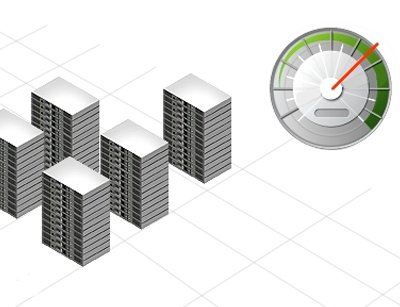Emerson Network Power announced the global availability of the first four software applications in the Trellis DCIM platform.
To operate a data center that is always changing and optimising you need a solution to have multiple functions said Stephen Hassell, president of the Avocent business of Emerson Network Power.
He told DatacenterDynamics FOCUS: “To be a viable DCIM system you need to be able to do three different things, you need to see what you have, you need to make decisions and you need to take action. You don’t want to have to have a particular tool set for each. That is what led to the products that we’re talking about today.”
The applications
Trellis Inventory Manager – ‘for an accurate and complete model of data centers globally, the knowledge of where devices and equipment are located, the relationship between these components, and what resources are being used by data center equipment.’
Trellis Site Manager ‘reports the health of the infrastructure including environmental conditions to data center personnel, enabling them to recognize and resolve conditions that impact infrastructure availability and system performance.’
Trellis Change Planner ‘works with Inventory Manager to ensure installs, moves and decommissions of equipment are planned, tracked and communicated to team members in a consistent manner.’
Trellis Energy Insight ‘calculates total data center energy consumption, electrical costs and power usage effectiveness (PUE)/data center infrastructure efficiency (DCiE) value.’
“The Trellis platform ends compartmental decision-making so data center professionals can optimize every aspect of their critical infrastructure operations,” said Mr Hassell. “The result is a new level of data center performance that makes it possible to achieve the high availability, operational efficiency and the agility to meet business demands.”
Hardware and software combination
Emerson’s combination of a rack mounted hardware appliance and its software platform is, it says, unique in the market.
On the software side the firm has a roadmap of releases stretching into Autumn and Winter 2012 and beyond. Mr Hassell said the series of releases will be at least on a semi-annual basis and will have more in common with a Facebook type software release program than that of a large ERP vendor. Ultimately there may be a type of app store for Trellis development.
The company ran an early adopter program and included suggested changes to the software.
“Early adopters have given us continuous feedback and we made changes based on that feedback so we are a little late with the product,” said Mr Hassell.
One such customer was service provider Infosys. “Infosys is committed to building environmentally sustainable solutions for our clients’ enterprises,” said Ankush Patel, Infosys vice president of sustainability. “With our deep experience in sustainability and data centers, we see the need for systems that excel in both energy efficiency and performance. The Emerson Network Power Trellis platform is installed in our Bangalore data center as part of the Trellis Early Adopters Program. It shows great promise in being able to continuously monitor critical systems and predict potential issues in a cost- and energy- efficient manner.”
Hardware appliance
Emerson’s Universal Management Gateway (UMG) is the hardware appliance that integrates with the software applications.
It is a system for aggregating data points – appliance models range from one that can handle 1,000 data points to one that can handle 10,000 data points. The user must assess how many relevant data points there are.
It is about configuration and architecture – how many universal management gateways do I need and where am I putting those? That’s an architectural issue, the company said.
The advice is to put them close to what they will monitor.
Mr Hassell said: “On Trellis – we could have taken Liebert Sitescan, DC Monitor, Aperture DS View and could have just tried to integrate those and put a universal interface around them – and say here is a management suite. The problem with integration is every point causes a slow down. If you integrate, any time you make a change you have to full regression testing. Instead we took the common middleware piece and built around that."
The underlying Trellis platform is based on Oracle Fusion.
Modularity
Emerson highlights the modular nature of its offering. If a customer wants to take just the inventory module, it can do so. Customers can start with just inventory and add modules all the way up to an end to end Trellis deployment – the underlying platform doesn’t change.
“Probably the biggest thing that we’re doing – and this is clearly relevant in the DCIM space is that by deliberately making the product so modular – it is not like buying into an ERP system – you can start with whatever problem you have and seek to solve that. If you don’t want to buy a UMG then you don’t have to. Alternatively we have people suing UMG and Aperture DS View. The important thing is that no matter where you start there is an on ramp you can expand out into a full blown Trellis commitment,” said Mr Hassell.
“The Trellis platform is going to be a comprehensive and powerful system,” said Andy Lawrence, research vice president for Datacenter Technology at 451 Research. “The system design and architecture, all based on real-time data, are unlike anything on the market today, and should be both flexible and highly scalable.”
“One of the more impressive features of the Trellis platform is that it has been designed and engineered with ease of use and simplicity in mind – the designers have paid a lot of attention to how datacenter personnel work. The information required to manage the data center is presented in context of the operation, which should be intuitive and increase productivity,” added Lawrence.
Mr Hassell said: “Once IT layer became virutalized, you put a dynamic infrastructure on top of a static physical infrastructure. So the question became how can we preserve availability while increasing efficiency. In order to do that you would have to bridge that gap.”

